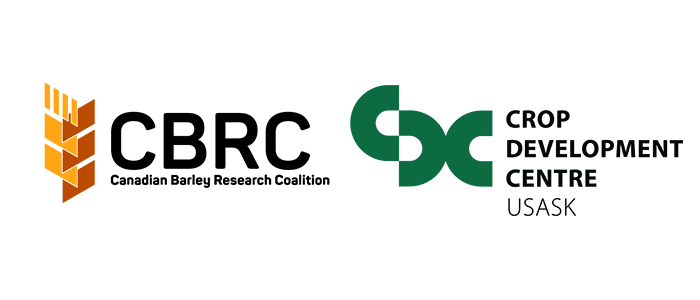CBRC commits $1.8 million to CDC barley breeding activities

Sept. 24, 2025 (Saskatoon, SK) – The Canadian Barley Research Coalition (CBRC) announced today it will provide $1.8 million in funding over three years to the University of Saskatchewan’s Crop Development Centre (CDC), to extend the core breeding agreement and support the development of varieties with improved agronomics, disease resistance and end-use quality.
The CBRC is a collaboration between the Saskatchewan Barley Development Commission (SaskBarley), Alberta Grains and Manitoba Crop Alliance.
“The keys to past success within the CDC barley breeding program have been the skilled staff, our in-house malt and molecular marker labs and the ability to evaluate large numbers of breeding lines. This CBRC funding will support these pillars moving forward,” says Curtis Pozniak, Director of the Crop Development Centre.
“This renewed investment ensures Western Canadian farmers can expect new barley varieties from a world-class program, keeping barley competitive with improved yield and agronomic benefits,” says CBRC Chair Cody Glenn (who also Chairs SaskBarley). “The CDC is uniquely positioned to deliver effective results for Western Canadian agriculture. This funding extension will allow the program to continue delivering improved varieties and capitalize on new opportunities.”
Leaders from CBRC’s member organizations echoed this sentiment, highlighting the practical benefits for farmers.
Scott Jesperson, Chair of Alberta Grains, emphasized the real-world impact of the funding: “The CBRC’s investment in the CDC reflects the importance of providing farmers with access to high performing, resilient barley varieties. This funding will deliver on-farm benefits that help barley farmers improve yields, manage disease pressure and stay competitive in global markets.”
Building on this, Jonothan Hodson, Chair of Manitoba Crop Alliance, pointed to the CDC’s impressive history: “The CDC has an excellent track record of developing high-performance barley varieties for a variety of end-use markets. The CBRC’s continued support for this innovative breeding program will ensure barley remains a productive and profitable crop for farmers across Western Canada.”
Continuing the funding agreement with the CDC was a priority for CBRC and is in line with the organization’s goal of facilitating long-term investments aimed at improving profitability and competitiveness for Western Canadian barley farmers.
-30-
For more information:
Jill McDonald
CBRC President
306-370-7237
jmcdonald@saskbarley.com





